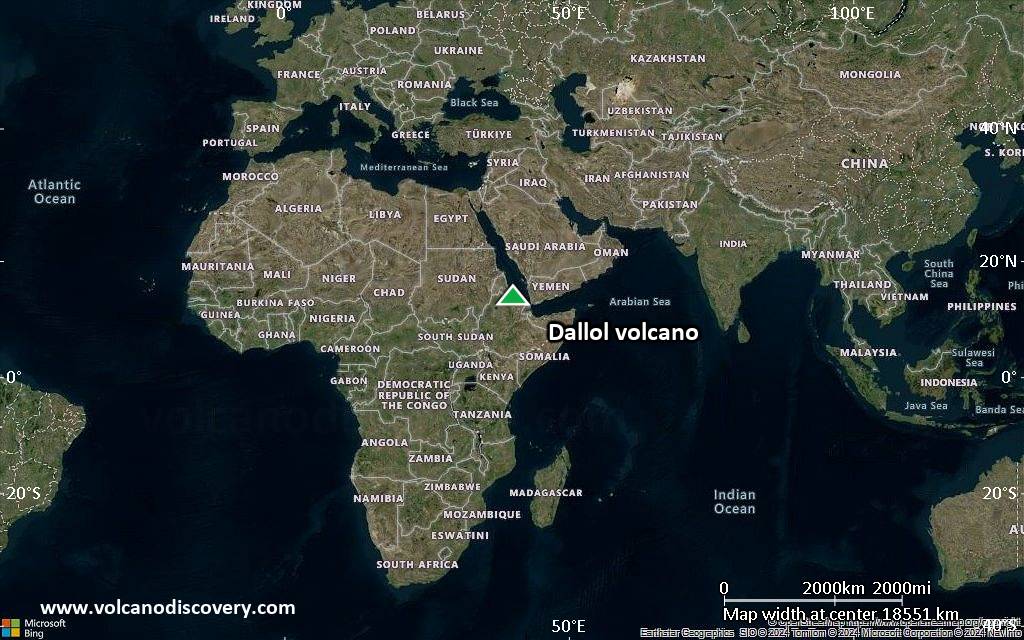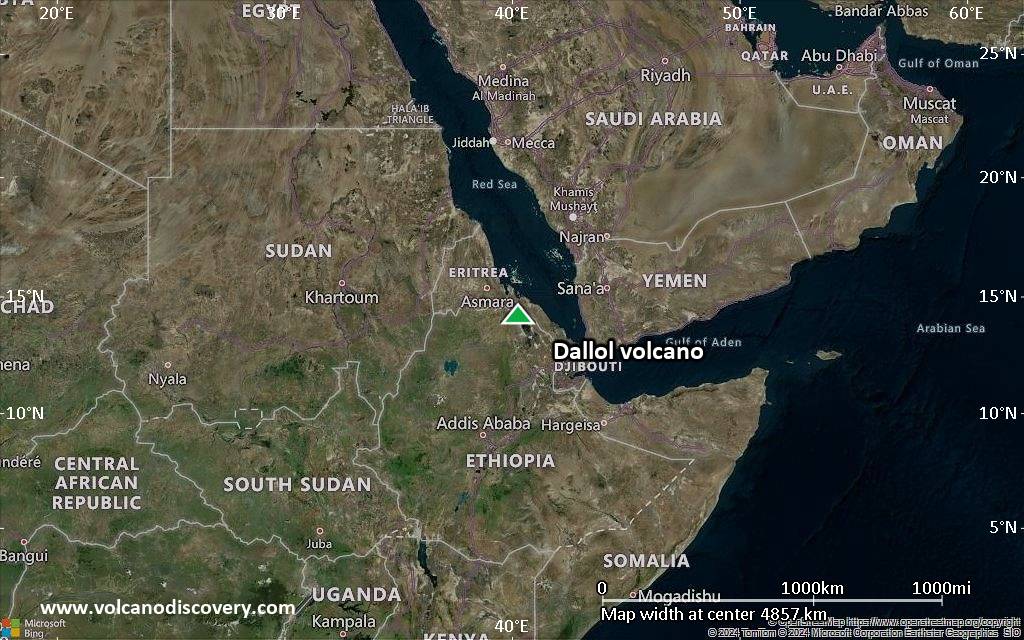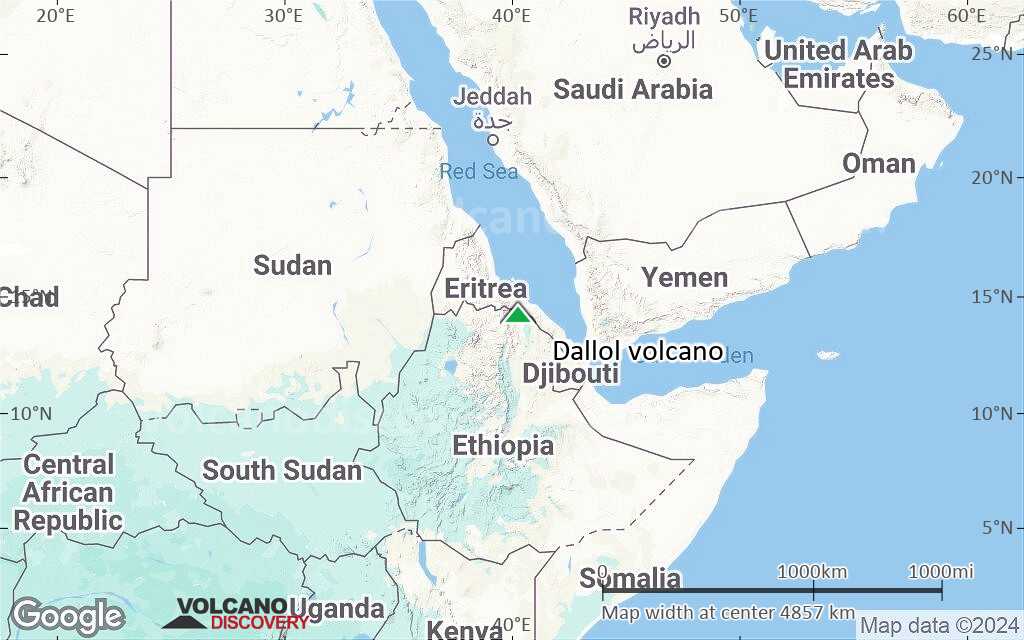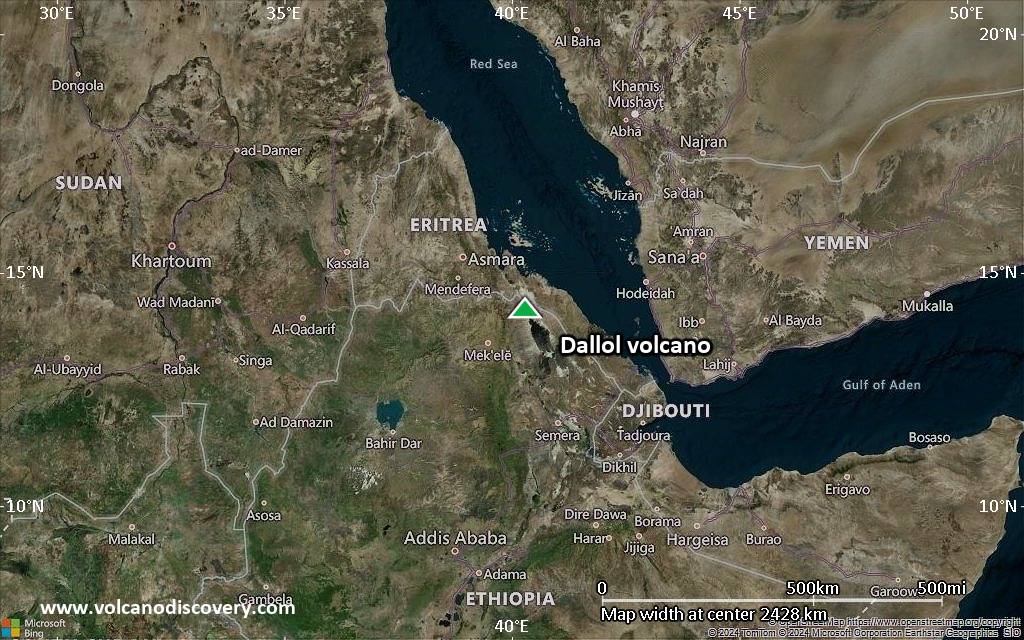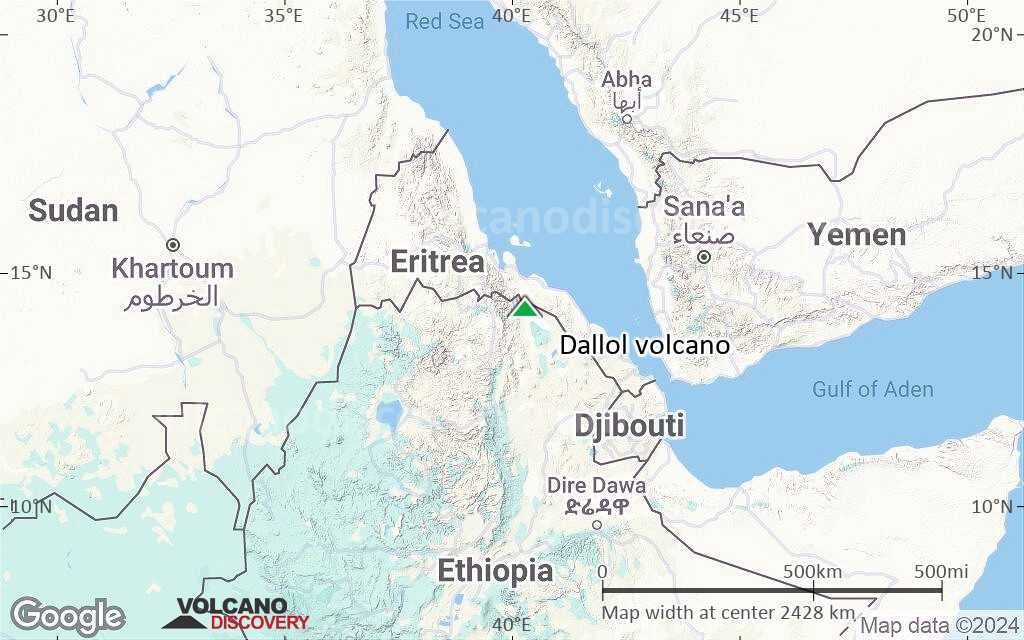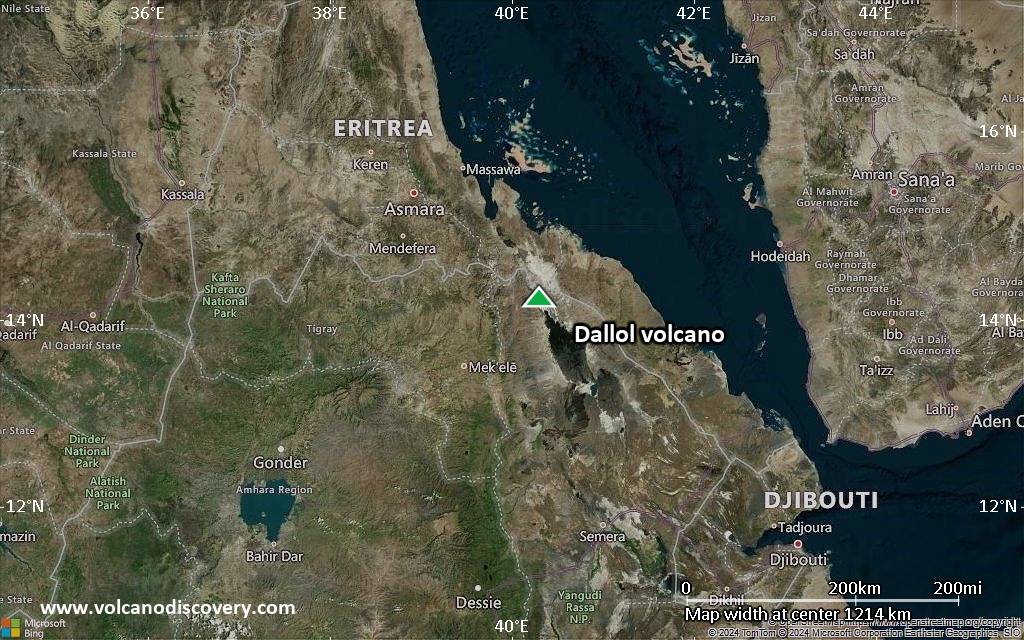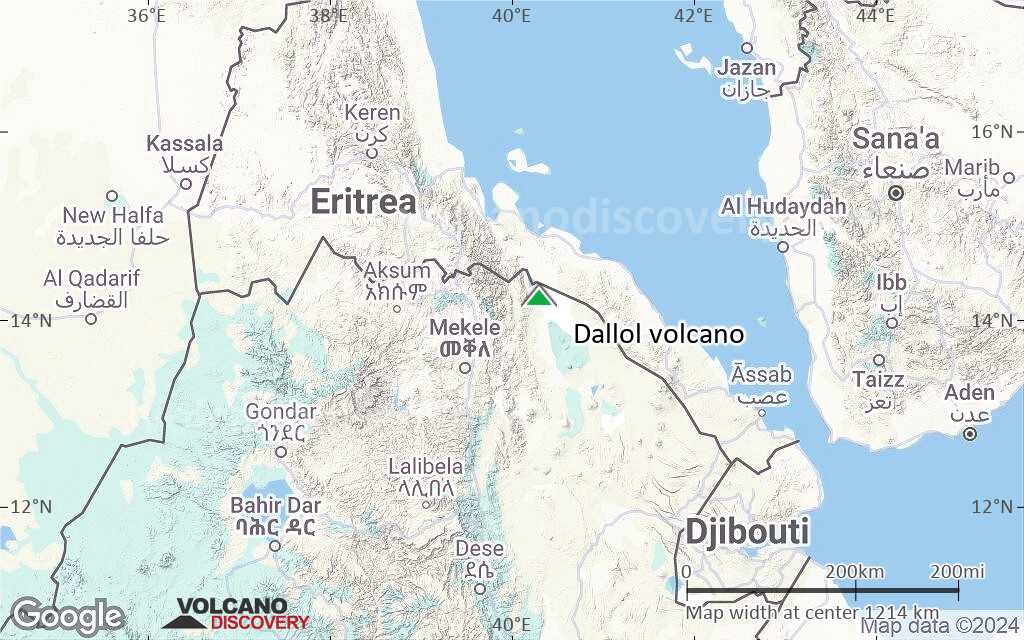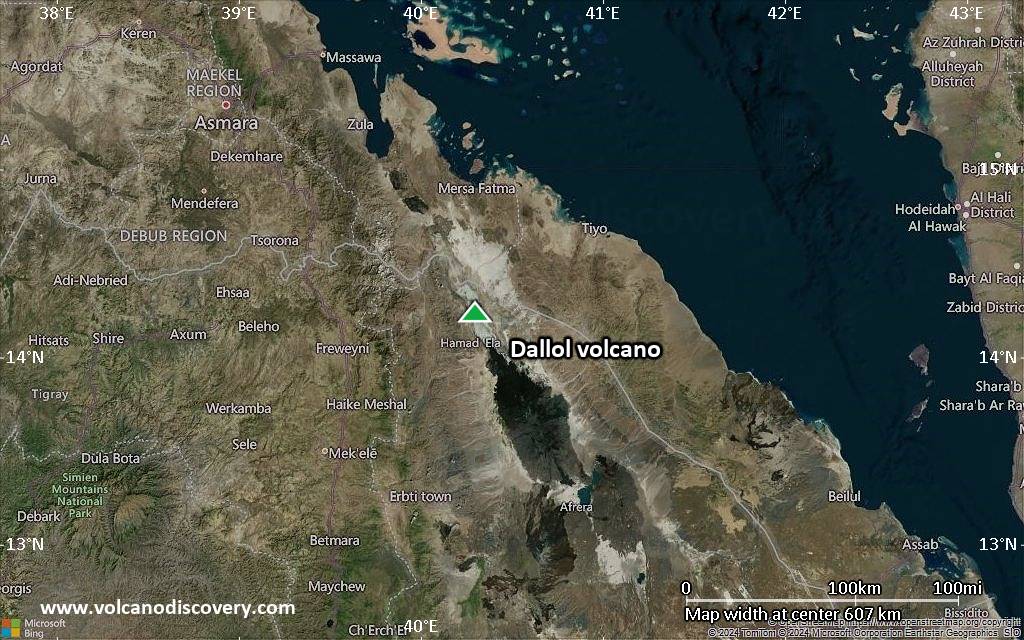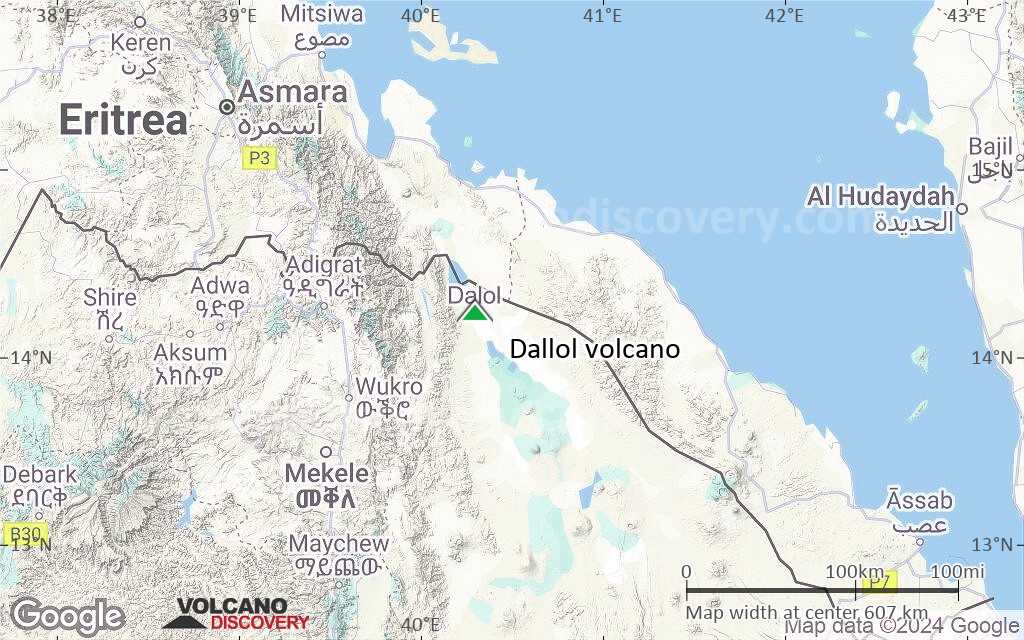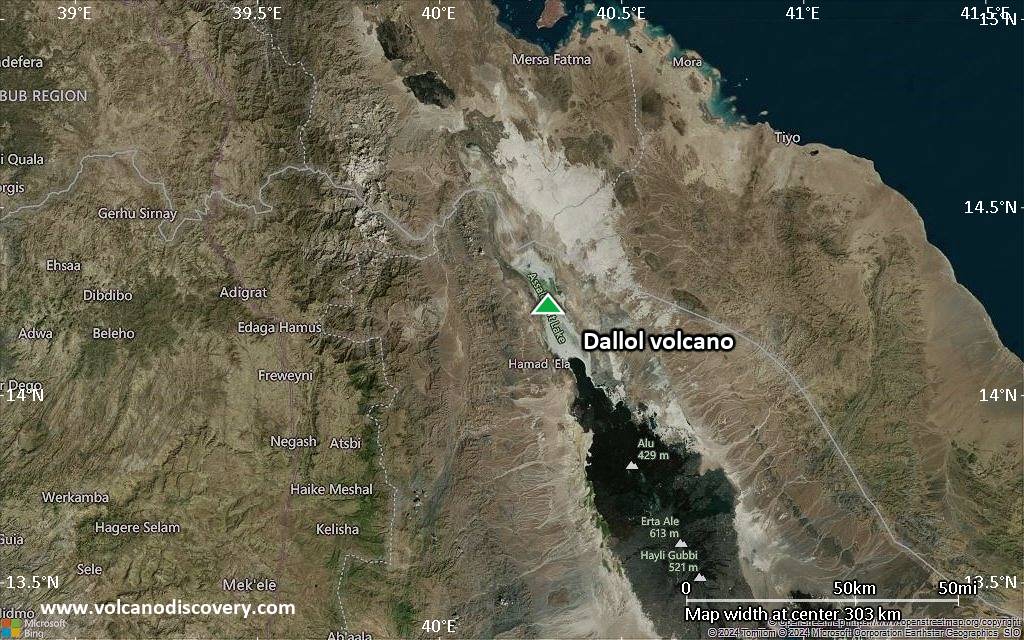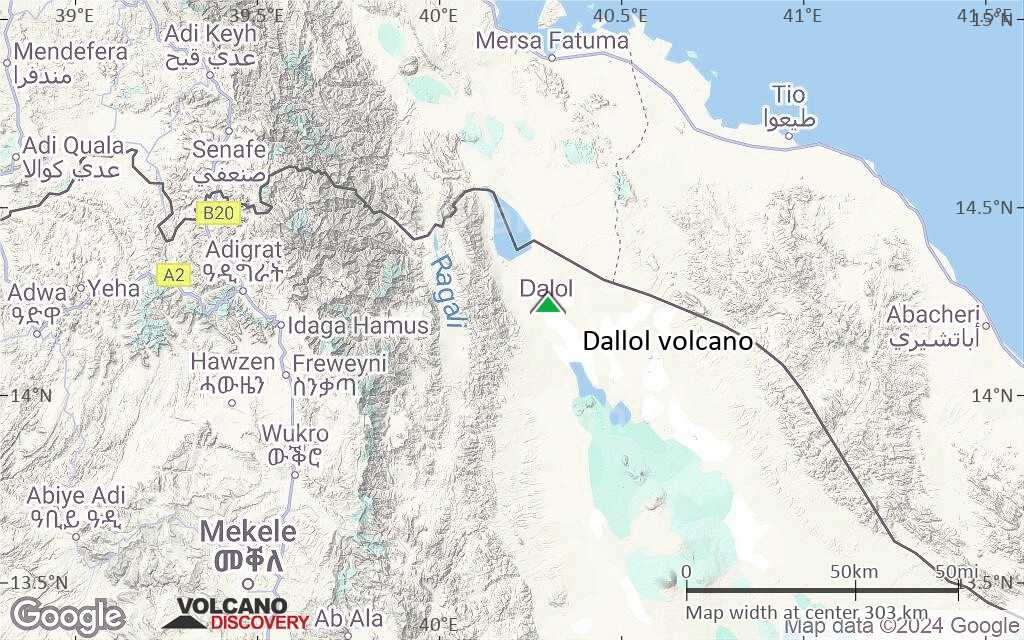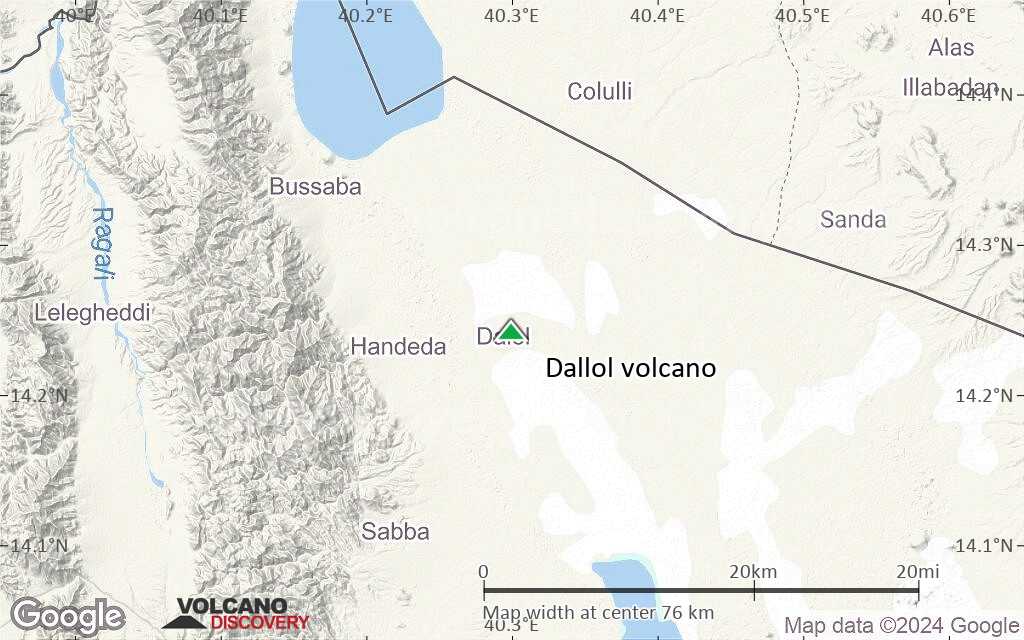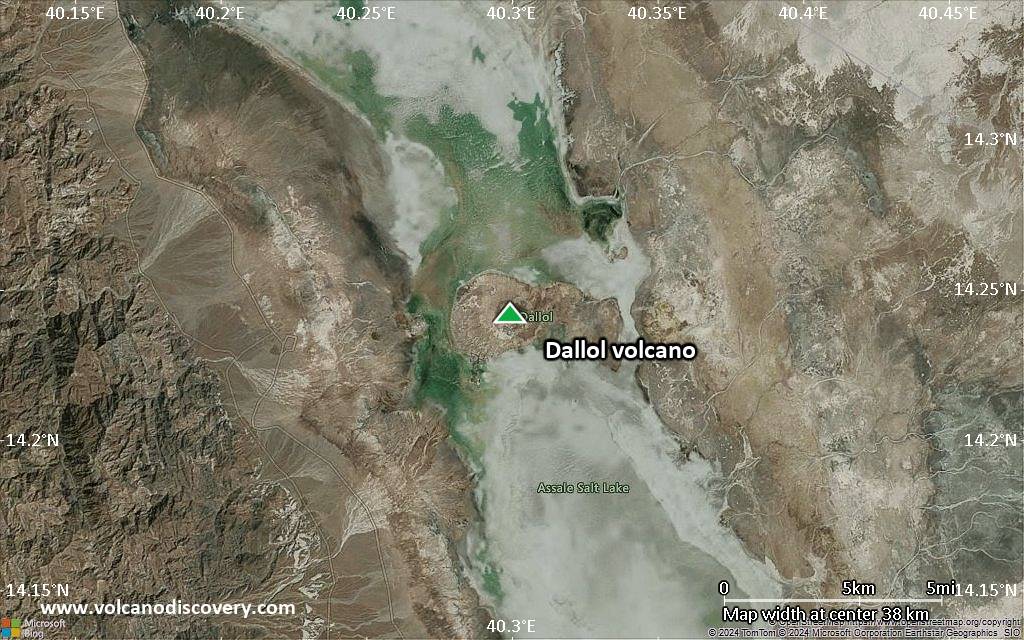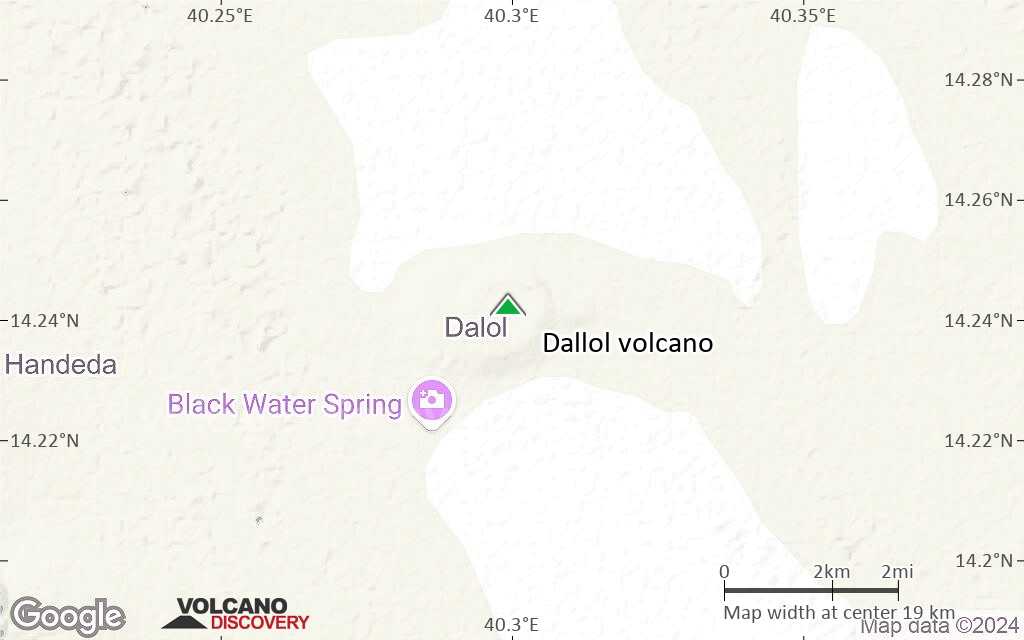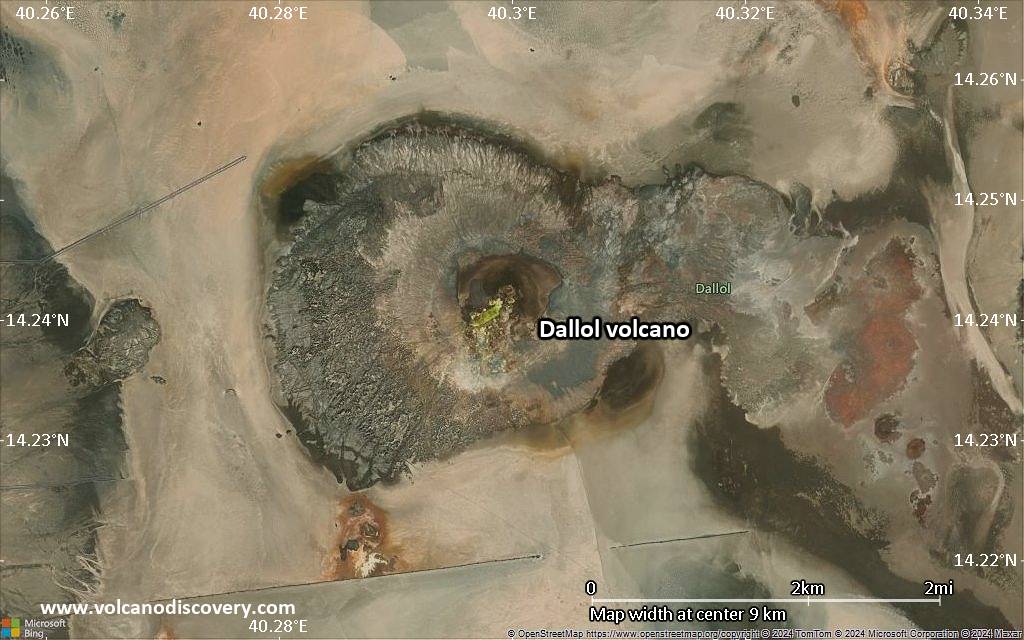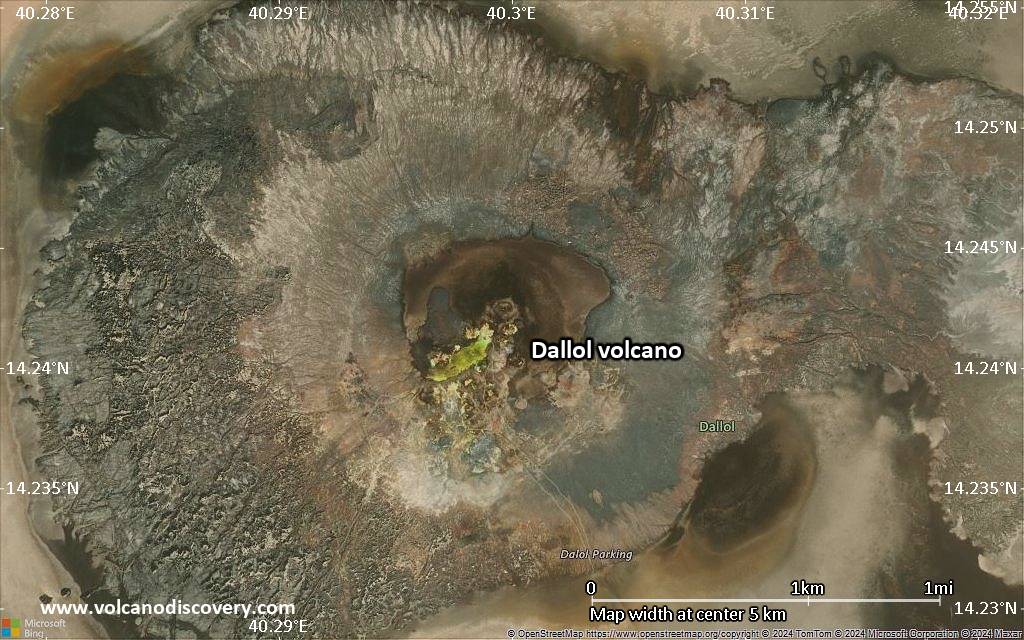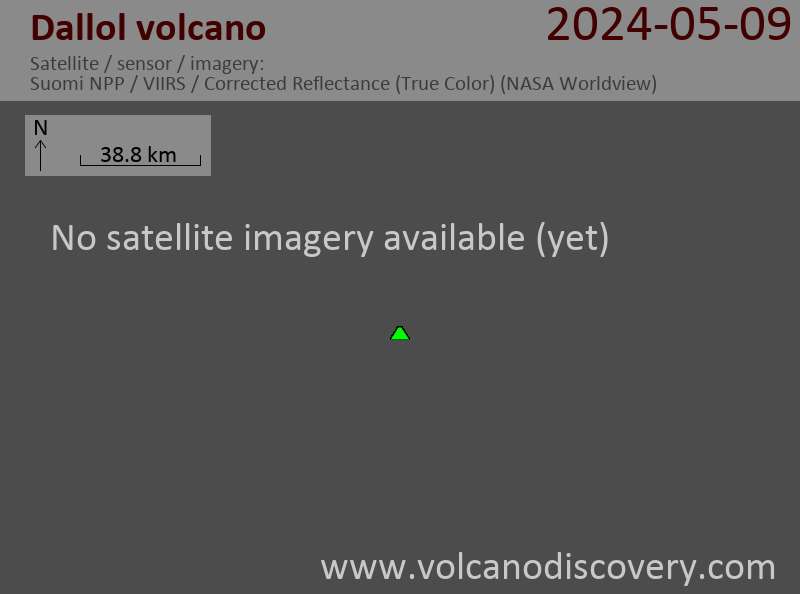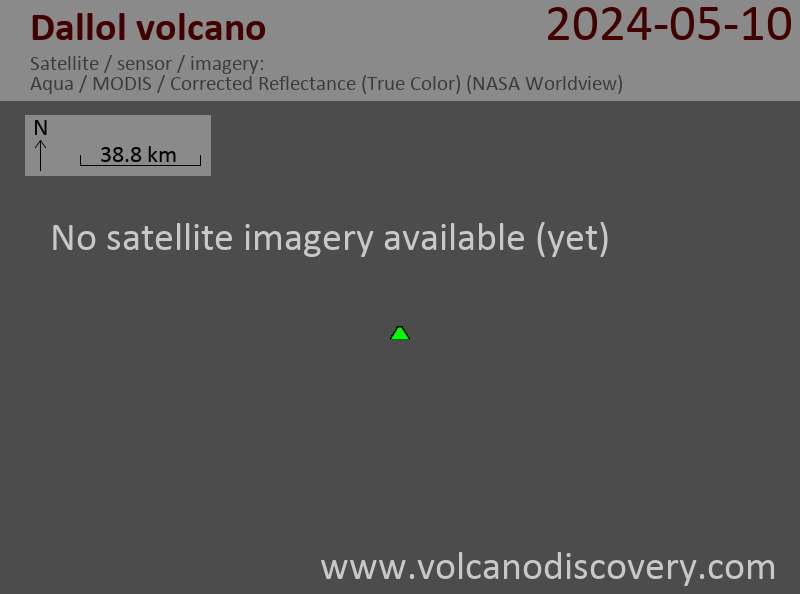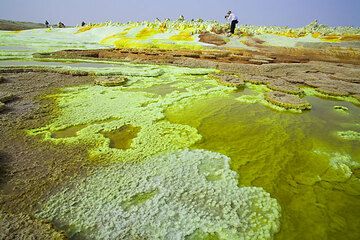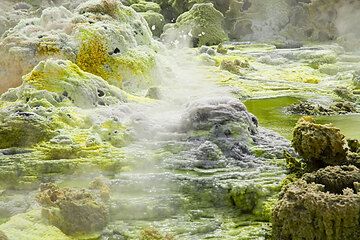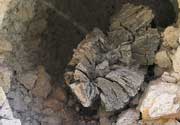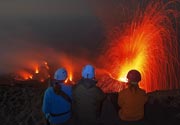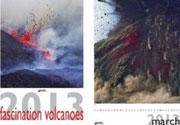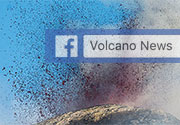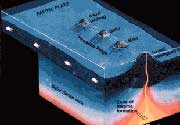Dallol Volcano
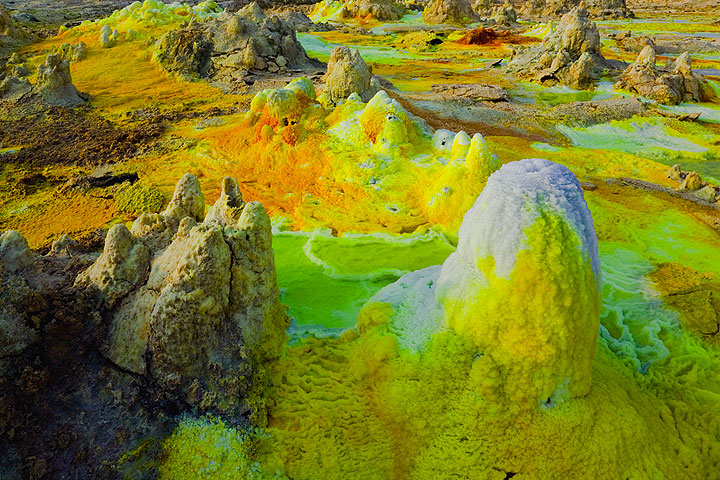
The Dallol volcano, or rather the Dallol hydrothermal field is located in a remote part of the northern Danakil Depression in NE Ethiopia. It is the lowest known sub-aerial volcanic area in the world.
Dallol is one of the world's most spectacular landscape: a vast area of uplifted thick salt deposits affected by intense fumarolic activity, probably caused by an active volcanic system beneath several kilometers of evaporation salt deposits.
Dallol is said to be the hottest place on the planet, with average annual temperatures well above 30 deg C.
The area commonly referred to Dallol volcano contains the approx. 1.5 x 3 km wide Dallol "mountain" (rising about 50 m above the great salt lake) near the border with Eritrea, and nearby warm springs including the Yellow Lake, the Black Mountain with the Blue Lake, said to be an explosion crater from a hydrothermal eruption in 1926.
Dallol is famous for its hot brine, and multicolored white, pink, red, yellow, green, gray and black salt deposits, hot springs and miniature geysers. These bizarre structures form in a complex interaction of solution and recrystallization processes driven by hydrothermal waters and rapid evaporation.
Dallol volcano eruptions: 2011, 1926
Latest nearby earthquakes
| Date and Time | Mag / Depth | Distance / Location | |||
|---|---|---|---|---|---|
Background
Dallol overlies several km of quaternary evaporates which contain large amounts of potash (potassium carbonate, K2CO3) that were quarried by shifting mining companies for most of the 20th century.It is believed that Dallol, located on the main rift axis of the Danakil depression, is caused by an active basaltic volcano located under the layers of salt. The roughly circular depression on top of Dallol mountain was suggested to be a collapse crater.
The only known volcanic activity was a phreatic explosion in 1926 that produced a 30 m wide crater at the foot of the Black Mountain.
Dallol Volcano Photos
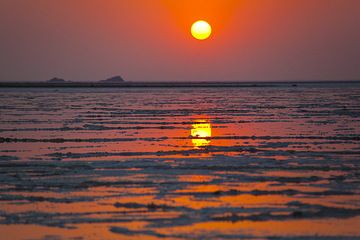
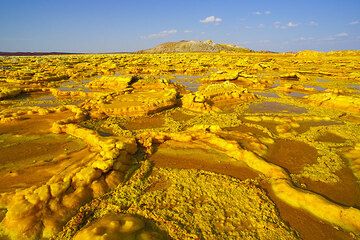
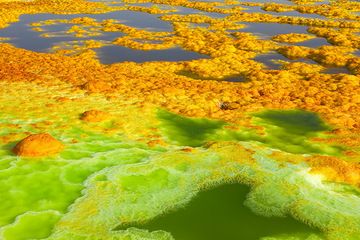
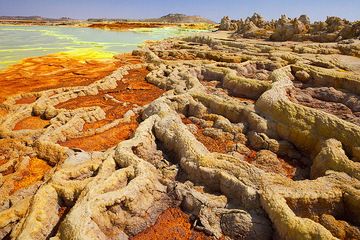
Significant volcanic eruptions: Dallol volcano
| Date | Note | VEI | Deaths | Damage | |
|---|---|---|---|---|---|
| Dallol crater Historical obs./docs. | 0 | ||||
Historical obs./docs. | 1 | ||||
Dallol Volcano FAQ
+When was the last eruption of Dallol volcano?
The last confirmed eruption of Dallol occurred in 2011.
+How often does Dallol volcano erupt?
There are no known historic eruptions, but evidence from geologic records shows that it has had at least 2 eruptions over the past 10,000 years. This number is likely much higher because many past eruptions might not have left evidence recognizeable today and/or the volcano might not have been studied in too much detail. Using the available data, a very conservative estimate is that Dallol volcano erupts every 5,000 years.
+How active is Dallol volcano at present?
Dallol volcano is occasionally active: Since 1900, it has had 2 eruptions, and been active during 2 years out of 126 as of now. This means, Dallol has been in eruption one in 63 years on average. The last eruption was in 2011 and ended 14 years ago.
+When was the largest eruption of Dallol volcano?
The largest eruption of Dallol volcano in historic times occurred in 1926. It only has a VEI (Volcanic Explosivity Index) of 1, likely because it was a mainly effusive eruption generating lava flows but very little ash.
Latest satellite images
Price $ 4390
Price $ 3190
Dallol Volcano Maps
